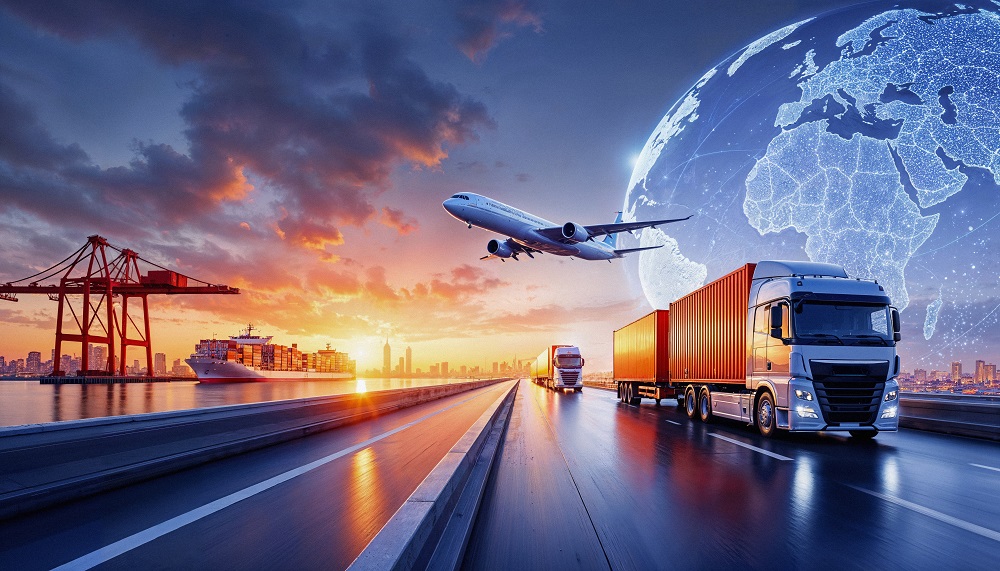Revolutionizing Freight Logistics: How AI and Machine Learning are Redefining the Future of Supply Chains
July 29, 2025
Discover how AI and machine learning are transforming freight logistics—boosting efficiency, reducing costs, and reshaping the future of global supply chains.

AI & Machine Learning: Redefining the Future of Freight Logistics
Freight logistics has always been the invisible backbone of global trade. But over the years, the industry has been plagued by inefficiencies, unpredictable disruptions, and rising cost pressures. Now, Artificial Intelligence (AI) and Machine Learning (ML) are stepping in as transformative forces — not just improving operations but reinventing the very foundation of how supply chains function.
At Redball Xpress, we believe that adopting AI-driven solutions is not just about embracing technology — it’s about preparing for a smarter, more resilient, and future-ready logistics ecosystem.
Smarter Demand Forecasting: From Guesswork to Data-Driven Precision
Traditional demand forecasting has relied heavily on historical sales and fixed seasonal patterns. But today’s volatile global markets demand more intelligent systems. AI and ML models can process vast datasets across multiple dimensions:
-
Historical Patterns: Detecting seasonality, product cycles, and sales trends.
-
External Influences: Factoring in economic shifts, weather patterns, social media signals, and competitor activity.
-
Real-Time Inputs: Tracking live purchase behavior, search queries, and even global news sentiment.
This enables logistics providers to predict demand shifts with remarkable accuracy. The result?
-
Reduced overstocking and stockouts.
-
Better production alignment with actual demand.
-
Lower carrying costs in warehouses.
-
Consistently higher customer satisfaction.
Forecasting is no longer guesswork — it’s a science backed by intelligent algorithms.
Intelligent Route Optimization: Turning Roads into Smart Networks
Transportation is the single largest cost driver in logistics, but AI-powered optimization is rewriting the rules of fleet management.
-
Dynamic Route Planning: AI uses live traffic data, weather updates, road closures, and delivery priorities to constantly recalculate the most efficient route.
-
Fuel Efficiency: Optimized driving speeds and fuel-saving routes reduce both expenses and emissions.
-
Predictive Maintenance: Vehicle IoT sensors send real-time performance data, which ML models analyze to predict breakdowns before they happen.
-
Driver Insights: Unsafe driving patterns or inefficiencies are flagged, allowing training that improves safety and reduces costs.
The impact is clear: faster deliveries, reduced downtime, and more sustainable fleet operations.
Smart Warehouses: Where Robotics Meets Data Intelligence
Warehousing is evolving from static storage units into intelligent, AI-driven ecosystems. Companies investing in warehouse automation are seeing massive gains in efficiency and accuracy.
-
Automated Picking & Sorting: Robots powered by AI can pick and move products faster and with greater precision than human labor.
-
Space Optimization: ML algorithms analyze inventory flow to redesign layouts for maximum efficiency.
-
Real-Time Inventory Tracking: Drones and AI-powered cameras automate stock counts and detect misplaced items.
-
Predictive Staffing: AI forecasts peak and off-peak demand, ensuring the right workforce is available at the right time.
The warehouse of the future is fast, lean, and highly adaptive — and it’s already here.
End-to-End Visibility: Seeing Disruptions Before They Strike
One of the greatest advantages AI and ML bring is predictive visibility across the supply chain. Instead of reacting to disruptions, companies can now anticipate and mitigate them.
-
Real-Time Cargo Tracking: Location, condition, and security status are monitored 24/7.
-
Risk Forecasting: AI models track geopolitical events, natural disasters, and global trade movements to predict disruptions before they impact shipments.
-
Smart Rerouting: If a port is congested or a storm is imminent, AI can suggest alternate routes instantly.
-
Fraud and Anomaly Detection: ML systems flag unusual shipment data that may signal theft, fraud, or compliance risks.